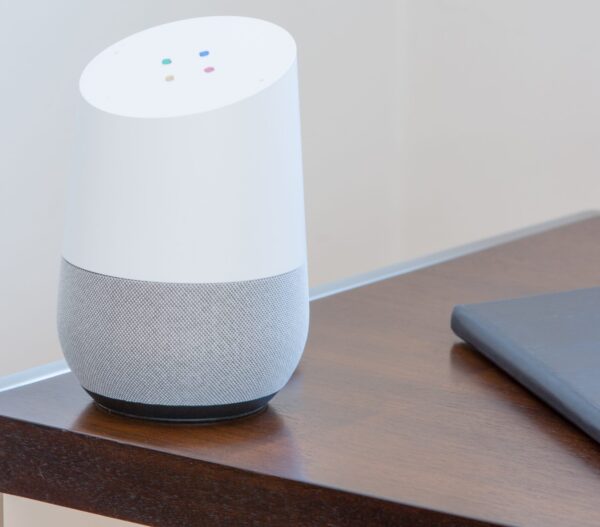What scares children when it comes to tech?

While parents and educators are often concerned about privacy and online safety, there are far fewer insights as to what worries children when it comes to emerging technologies. University of Washington (UW) researchers have set out to change this, helping to define, for the first time, what children mean when they say “technology is creepy.”
Children in a new study undertaken by UW researchers described “creepy” technology as something which is unpredictable or poses an ambiguous threat that might cause physical harm, or threaten an important relationship.
Researchers also pinpointed five aspects of emerging technology which could contribute to this feeling of ambiguity. The results were presented 8 May at the ACM CHI conference on Human Factors in Computing Systems, in Glasgow, Scotland.
Years of working with children led researcher, Jason Yip, to reflect on a term he often heard children use as a way of rejecting or not interacting with certain technologies or platforms – creepy.
When pressed, Mr Yip said, the children had trouble articulating what they meant by creepy, so researchers designed a series of activities, to help the children to work through their thoughts and feelings, and to give researchers greater insight into the children’s thoughts.
Previous research with adults had indicated that ambiguous threats are creepy, but not scary. For example, the presence of many crows, all of a sudden, independent of cause, may lead a person to feel “creepy” but not scared.
Four separate design sessions were held with children aged seven to eleven, where children were asked to prototype their own technologies, or rank real or imagined technologies as “creepy” “not creepy” or “don’t know”. Devices which could bring about physical harm or disrupt an important relationship were most consistently ranked as creepy.
Alexis Hiniker, an assistant professor involved in the research, said that when brainstorming with children about what they were worried about, the research team “never considered that they might be concerned that somehow technology would get between them and their parents, and that this would be such a salient issue in their minds”
The five key properties of technology that lead to fears in children were:
Deception versus transparency
Researchers found that children wanted to understand how technology works, and what information a device is collecting. When a child asked a digital voice assistant “are you going to kill me in my sleep?” the answer was “I can’t answer that”, leading the child to be concerned that this was, in fact, an option the digital assistant may choose to take.
If the question was “how many grains of sand are on the beach?” or “how many hairs are on my head?” then the response would work well, said Mr Yip. However, when questions have an ominous undertone, such as in the example above, the response indicates deception or uncertainty, leading children to be concerned.
Ominous physical appearance
Children are sensitive to how a technology looks, sounds and feels, researchers said. This sensitivity extends to designs and logos. For example, researchers found that the children were also wary of Maslo, an app with a large black dot as its interface, because it looked like a “black spirit” or a “black hole.”
Lack of control
Children want to control technology’s access to their information and the flow of that information to their parents. For example, when children were asked to design a technology that was trustworthy, some of the children designed an intelligent trash can that both scanned and deleted their facial recognition data each time they used it. Their trash can also had a button that allowed for manual deletion of data.
Unpredictability
The children surveyed reacted poorly when technology acted unexpectedly, like automatically knowing their name or laughing. To children, the laughing could communicate hidden, and possibly malicious, intent.
Mimicry
Children also don’t like technology that pretends to be something else, especially when it’s trying to mimic people in their lives or themselves, researchers found. Technology that mimics them could be trying to steal their identities or disrupt family relationships.
Mr Yip noted that all five themes are related to the core premise of ambiguous threats.
“It’s a not specific monstrosity coming after them here like when something is scary; it’s more nuanced so that they’re not sure of the consequences of their actions,” he said.
“The children kept referencing the movie Coraline. In the story, the dolls ask Coraline to make a change: ‘If you sew buttons over your eyes and become just like us, we will love you forever.’
Adult roles
The team found that trusted adults had some influence over whether or not the children thought that specific devices were creepy. For example, one child deemed smartphones “not creepy” because he saw his parents using them. Another child thought that laptops were creepy because his parents taped a piece of paper over the camera to “keep the robbers away.”
The researchers acknowledge that their results could be used to make technology that tricks children into a false sense of security, however the team thinks it is more important to have these results available to the public to help parents talk to their children about technology and any types of fears that might arise.
“Children have access to so many different kinds of technologies compared to when we were growing up,” Ms Hiniker said. “But their basic fears haven’t changed at all. Children want to feel physically safe and anchored to trusted adults who are going to protect them.”
For those designing technology to be used with children, these questions may support.
The study, Laughing is Scary, but Farting is Cute A Conceptual Model of Children’s Perspectives of Creepy Technologies, may be read here.
Popular

Practice
Provider
Quality
Research
Workforce
New activity booklet supports everyday conversations to keep children safe
2025-07-10 09:00:16
by Fiona Alston

Quality
Practice
Provider
Workforce
Reclaiming Joy: Why connection, curiosity and care still matter in early childhood education
2025-07-09 10:00:07
by Fiona Alston

Policy
Practice
Provider
Quality
Research
Workforce
Beyond the headlines: celebrating educators and the power of positive relationships in early learning
2025-07-07 10:00:24
by Fiona Alston













